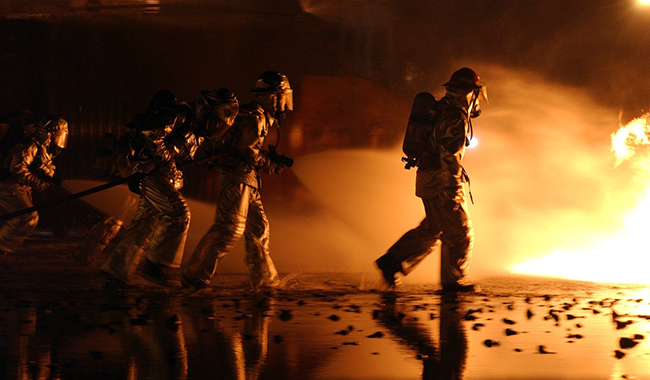Overcoming Organizational Obstacles to
Unlock the Value of Project Management Part 1:
Putting Out Fires and Reducing the Drama
By Vicki Wrona, PMP
Recent research has documented the value of project management at various levels and in a variety of organizations. In the research study, Researching the Value of Project Management by Janice Thomas, Ph.D. and Mark Mullaly, PMP, the researchers found that in both public and private organizations there were measurable improvements in productivity and business outcomes. Well-executed project management, which fits within the culture of the organization, creates repeatable processes that can lead to sustainable innovation through ever-improving efficiency. It improves communication between business units, improves the quality of the product, improves perceived value, manages risks and reduces cost. As a leader, it is much easier to report to stakeholders the good news that results from project management than the bad news that emerges without it.
For some organizations, however, those benefits aren’t realized. The challenge to effective project management may stem from issues within the culture rather than with the skill of the project manager. Many organizations struggle with project management because they take an “all or nothing” approach. In their attempt to utilize project management practices they run into cultural obstacles and give up too soon rather than leverage the processes to overcome cultural hurdles. In this blog series, we will explore five obstacles and how sound project management practices can be used to overcome barriers.
The first barrier we will examine is the culture of fire-fighting.
Obstacle #1: Fire-Fighting and Drama
One could concede that, on occasion, sudden changes in the marketplace or catastrophic events happen which cause the business unit to spin into a flurry of activity. Unfortunately, in some organizations, this has become standard operating procedure. Organizations that “live” in this space tend to be focused on short-term results rather than long-range plans and strategies. Activity is confused with accomplishment and fire-fighting is recognized and rewarded. We heard a leadership consultant say once, “When your organization is known for recognizing fire-fighting, you had best be on the lookout for arsonists.” Arsonists in this example are the poor planners and procrastinators who wait until the very last minute before rushing in to save the day. Unfortunately, they are often fixing the very problems they created, and are then rewarded for it.
Because preparation and planning are not rewarded, planners are seen as moderate performers compared to their frenetic, “heroic” counterparts. The project manager and project team that delivers against budget and timeline without histrionics and catastrophic events are deemed to have received the easy projects and so may not garner the same level of recognition for a job well done.
To overcome this barrier, I’ll outline steps that can be taken within the project management lifecycle of Initiating and Planning, Executing, Monitoring and Controlling and Closing.
Overcoming Fire-Fighting and Drama
To overcome the drama and fire-fighting mode of operations with your project stakeholders, the savvy project manager will go along with the culture and use it to their advantage by accentuating the potential risk and creating a sense of urgency.
During Initiating and Planning, they will build a plan with constraints and time limits, including tight turnaround times in the schedule. They will highlight and communicate the dangers of failure and the lack of flexibility of the schedule. Fortunately, they will also build in contingencies to allow the project to absorb unforeseen obstacles.
During Executing, these project managers are very good at keeping the pressure on everyone to deliver while communicating the most current deadlines. They emphasize current wins and the potential for risk as the project proceeds. In order to satiate the organization’s need for fire-fighting, an adaptable project manager will praise team members that “pull through” when times are tough, but only if the effort was truly in response to unforeseen issues rather than manufactured situations.
During Monitoring and Controlling, as necessary barriers arise, the project manager is aggressive about communicating any changes to the project team, demonstrating flexibility and adaptability.
Finally, during Closing, the project manager needs to document all of the progress and adaptations made to avoid unnecessary crisis. This leads to a continual improvement in process and may slowly change the work flow environment.
Obstacles abound in organizations but some simple project management steps can really drive performance. In the next post we will look at the obstacle of Turf Protection and how project management can open up silos and improve execution.
Have you successfully operated in a high-drama or fire-fighting environment? How did you make it work to deliver successful projects or initiatives?
In our next post we’ll discuss mowing down turf protection.
 Full Course: Unlocking the Value and Benefits of Project Management (1 day)
Full Course: Unlocking the Value and Benefits of Project Management (1 day)
Click here for our full list of available courses!
Unlock the Value of Project Management Part 1:
Putting Out Fires and Reducing the Drama





